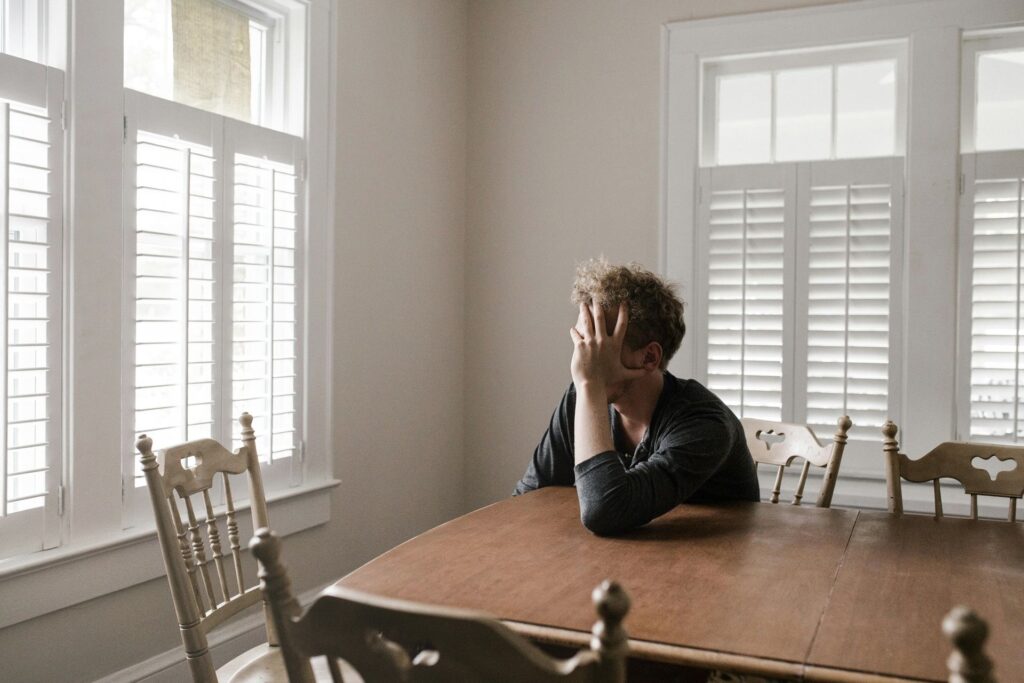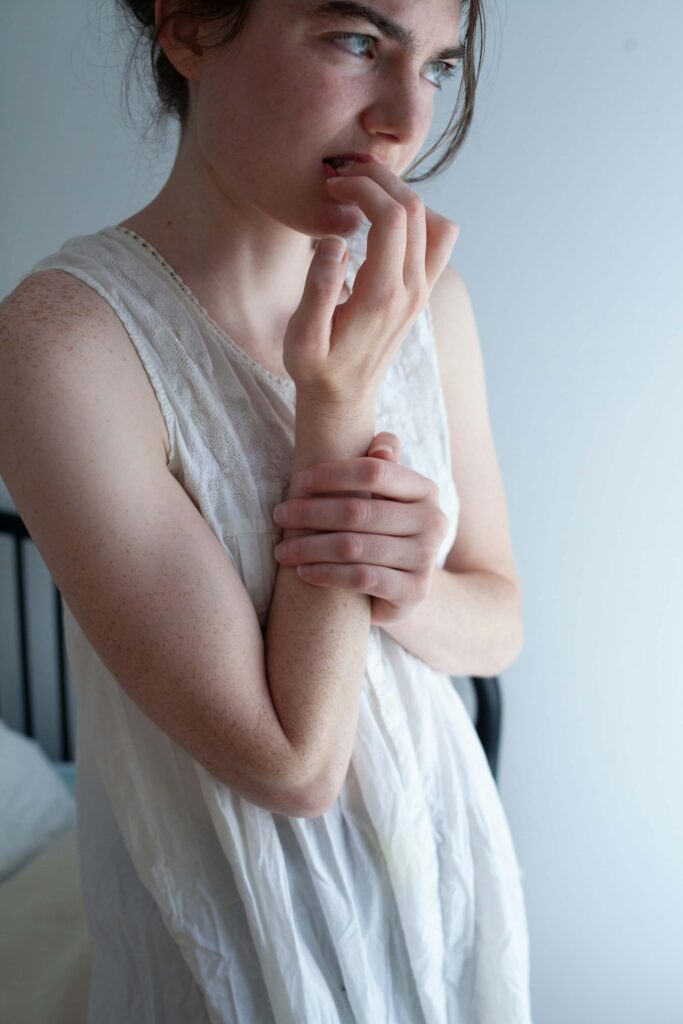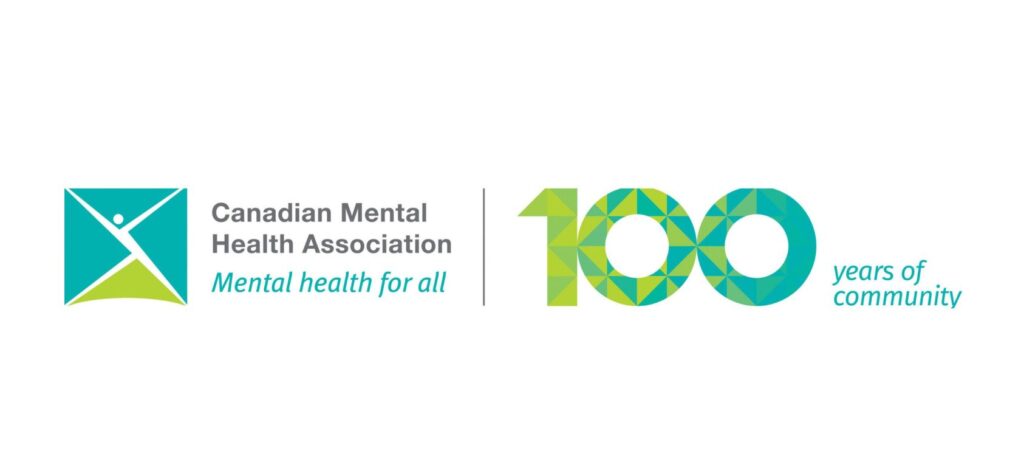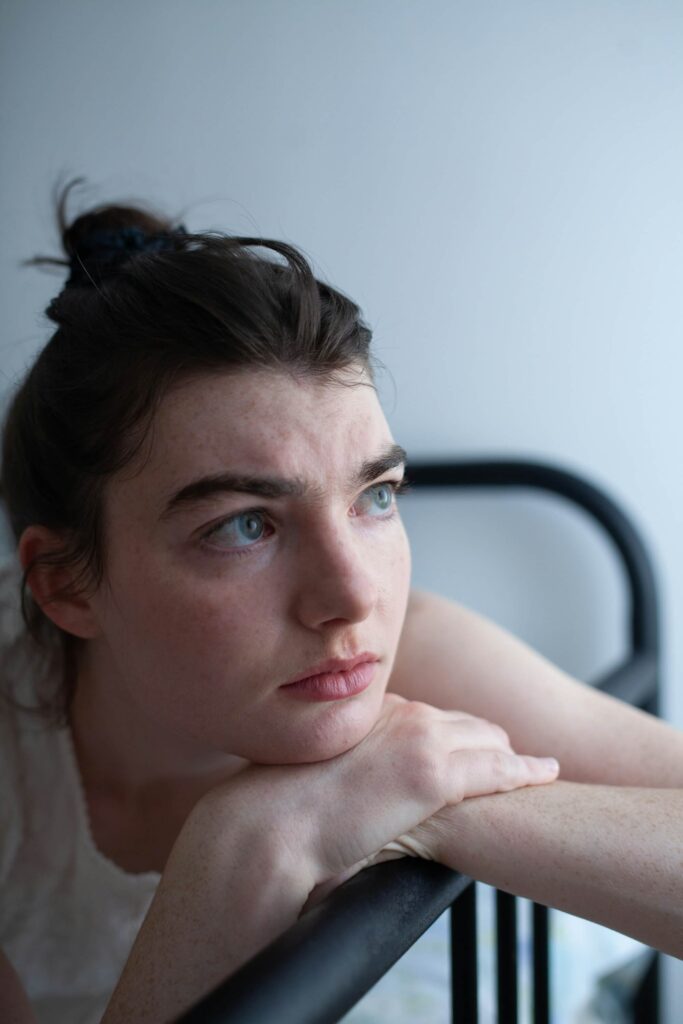Do you frequently find yourself engaged with concerns about the future? Does the prospect of social interactions cause your heart to race? If so, you may be experiencing Anxiety. Anxiety is characterized by feelings of tension, worried thoughts, and physical changes such as increased blood pressure.
Canadians aged 15 and older met the diagnostic criteria for anxiety. However, there is hope and assistance available. Foloww the text and delve into the complexities of anxiety, examining its various types, symptoms, and causes, and exploring effective strategies for relief. Understanding anxiety is the crucial first step towards managing it effectively.


According to DSM5-TR, anxiety is a multifaceted emotional state characterized by feelings of unease, tension, apprehension, and worry, often in response to perceived threats or stressful situations. It can manifest as a future-oriented mood state where individuals anticipate negative events, leading to impaired physical and psychological functioning.
While anxiety is a normal and natural human emotion, prolonged and intense feelings of unease can indicate clinical anxiety disorders, affecting both mental and physical health.
So, anxiety is not just feeling a bit nervous before a big presentation or a first date. It is like your brain’s alarm system is stuck on high alert, even when there’s no real danger in sight.
Anxiety is often seen in a negative light because of its weakening effects, it can also serve as a natural response to threats, preparing individuals for potential challenges. This duality highlights the complexity of anxiety as both a protective mechanism and a potential disorder.
According to the Canadian Mental Health Association, approximately 5% of the household population suffer from anxiety disorders. Also, a recent study by Statistics Canada indicated that the prevalence of generalized anxiety disorder among Canadians aged 15 and older doubled from 2.6% in 2012 to 5.2% in 2022.
That's a pretty significant jump! But Don’t worry, we are here for helping.

Anxiety has different forms in each person. Let's break down the main types:
GAD is characterized by persistent and excessive worry about various aspects of daily life. This means that anxiety in GAD is not limited to a specific situation or object. Worry in GAD is difficult to control and is associated with symptoms such as restlessness, being easily fatigued, difficulty concentrating, irritability, muscle tension, and sleep disturbances.
Panic disorder is a complex condition characterized the occurrence of sudden episodes of intense fear or discomfort that peak within minutes. These episodes, known as panic attacks, are accompanied by a range of physical and cognitive symptoms such as palpitations, sweating, trembling, shortness of breath, feelings of choking, chest pain, nausea, dizziness, chills or hot flashes, numbness or tingling sensations, and a fear of losing control or dying.
SAD also known as social phobia, is a mental health condition characterized by an intense, persistent fear of being watched and judged by others. This fear can affect work, school, and other daily activities. Individuals with SAD often experience significant distress in social or performance situations where they might be scrutinized by others. They fear that their actions or behaviors will lead to embarrassment, humiliation, or negative judgment. SAD can manifest in various ways, such as avoiding social interactions, experiencing physical symptoms like sweating or trembling, feeling an overwhelming sense of dread in social settings, and anxiety in relationships. The disorder is not just shyness; it is a condition that can severely impact one’s quality of life.
This is the fear of being in places where escape might be difficult, or help might not be available if things go wrong. It can make even simple trips to the grocery store feel like a monumental task.
Test anxiety is a widespread psychological preoccupation linked with excessive apprehension and fear of failing when evaluative situations, particularly examinations, are confronted. It manifests through symptoms in cognition, physiology, and emotion, thus highly influencing academic performance and self-efficacy.
SAD is one of the most common anxiety disorders of childhood. It is characterized as marked distress related to separation from the attachment figures. This is more than the usual developmentally appropriate separation anxiety and manifests as significant emotional distress or functional impairment from the separation of the home or caregivers.
Remember, having one of these does not mean you can’t have another. Anxiety disorders often like to party together, so it is not uncommon to experience symptoms of multiple types.
Anxiety is not just all in your head - it can affect your whole body. Here are some common signs that anxiety might be crashing your party:
If you’re struggling with some of these symptoms, it might be the time to get a help of a mental health professional. Remember, experiencing these symptoms does not automatically mean you have an anxiety disorder, but it’s worth getting checked out.
Anxiety is usually a sign that something should be seen or fixed, it’s an alarm in your system. Like when you don’t turn off your car’s sensor when they’re beeping, you need to pay attention to why your body is giving you this error. While we can't point to one specific cause, there are several things that can increase your risk of developing an anxiety disorder:
If anxiety runs in your family, you might be more prone to it.
Sometimes, the neurotransmitters in your brain (the chemicals that help transmit signals) can get unbalanced, leading to anxiety.
If you are the type of people who likes to be in control or tends to be a perfectionist, you might be more susceptible to anxiety.
Traumatic events, major life changes (e.g., divorce, death of loved ones, immigration, etc.), or chronic stress can all trigger anxiety. It’s like your brain’s way of saying, “Whoa, hold up, this is too much!”
Certain health issues, like thyroid problems or heart arrhythmias, can mimic or worsen anxiety symptoms.
Alcohol, caffeine, and certain drugs can either trigger anxiety or make existing anxiety worse. You might use these substances to calm your anxiety, but they can actually make it worse in the long term.
Your surroundings play a big role. High-stress jobs, financial worries, or relationship problems can all contribute to anxiety.
Having depression or other mental health disorders significantly increases the likelihood of developing anxiety. Conditions like depression and PTSD are often comorbid with anxiety, meaning they frequently occur together and can intensify each other’s symptoms.
Remember, having one or more of these risk factors doesn’t mean you’re destined to develop an anxiety disorder. It just means you might want to be a bit more mindful of your mental health.
Unlike a broken bone or the flu, there's no simple test that can diagnose anxiety. However, there are some assessments for anxiety symptoms that shows how sever your anxiety is affecting your body. Therefore, mental health professionals use a combination of methods to determine if you're dealing with an anxiety disorder.
A team of experts in Different Clinic are ready to diagnose it through an technology-based assessment process to reduce anxiety. Read more about this process with provided link.

Here's the good news: anxiety is highly treatable. While it might feel overwhelming now, at Different Clinic there are several effective ways offering the best therapy for anxiety in your mental health journey:
Our team of experienced mental health professionals will work with you to develop a personalized treatment plan that fits your unique needs and lifestyle.
Living with anxiety can feel like you're constantly walking on a edge, but remember - you're not alone, and there is hope. This condition is common and there are many people in Canada that looking for instant anxiety relief. Whether you're dealing with generalized anxiety, panic attacks, or social anxiety, we offer effective anxiety help for you.
At Different Clinic, we support you every step of the way. From diagnosis to treatment and beyond, we are committed to helping you find your path to a calmer, more balanced life. Contact us today if you are looking for anxiety counselling and rediscover a life where anxiety doesn’t call the shots.
References:
4711 Yonge St., 10th Floor, Unit 10097, Toronto, ON M2N 6K8
Monday to Friday 8:00 AM to 8:00 PM / Weekends: Saturday from 10:00 AM to 6:00 PM.

